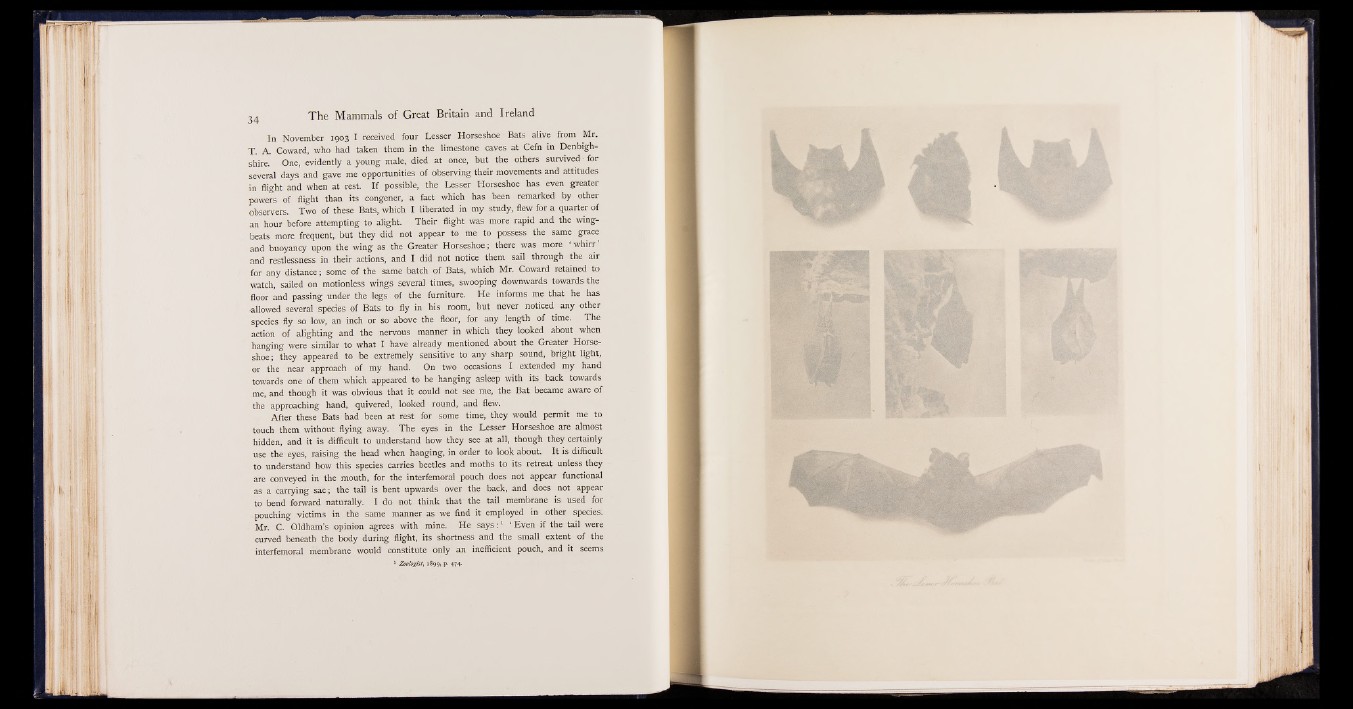
In November 1903 I received four Lesser Horseshoe Bats alive from Mr.
T. A. Coward, who had taken them in the limestone caves at Cefn in Denbighshire.
One, evidently a young male, died at once, but the others survived • for
several days and gave me opportunities of observing their movements and attitudes
in flight and when at rest. If possible, the Lesser Horseshoe has even greater
powers of flight than its congener, a fact which has been remarked by other
observers. Two of these Bats, which I liberated in my study, flew for a quarter of
an hour before attempting to alight. Their flight was more rapid and the wing-
beats more frequent,, but they did not appear to me to possess the same grace
and buoyancy upon the wing as the Greater Horseshoe; there was more ‘ whirr’
and restlessness in their. actions, and I did not notice them sail through the air
for any distance; some of the same batch of Bats, which Mr. Coward retained to
watch, sailed on motionless wings several times, swooping downwards towards the
floor and passing under the legs of the furniture. He informs me that he has
•allowed several species of Bats to fly in his room, but never noticed any other
species fly so low, an inch or so above the floor, for any length of time. The
action of alighting and the nervous manner in which they looked about when
hanging were similar to what I have already mentioned about the Greater Horseshoe;
they appeared to be extremely sensitive to any sharp sound, bright light,
or the near approach of my hand. On two occasions I extended my hand
towards one of them which appeared to be hanging asleep with its back towards
me, and though it was obvious that it could not see me, the Bat became aware of
the approaching hand, quivered, looked round, and flew.
After these Bats had been at rest for some time, they would permit me to
touch them without flying away. The eyes in the Lesser Horseshoe are almost
hidden, and it is difficult to understand how they see at all, though they certainly
use the eyes, raising the head when hanging, in order to look about. It is difficult
to understand how this species carries beetles and moths to its retreat unless they
are conveyed in the mouth, for the interfemoral pouch does not appear functional
as a carrying sac; the tail is bent upwards over the back, and does not appear
to bend forward naturally. I do not think that the tail membrane is used for
pouching victims in the same manner as we find it employed in other species.
Mr. C. Oldham’s opinion agrees with mine. He says: 1 ‘ Even if the tail were
curved beneath the body during flight, its shortness and the small extent of the
interfemoral membrane would constitute only an inefficient pouch, and it seems
1 Zoologist, 1899, p. 474-